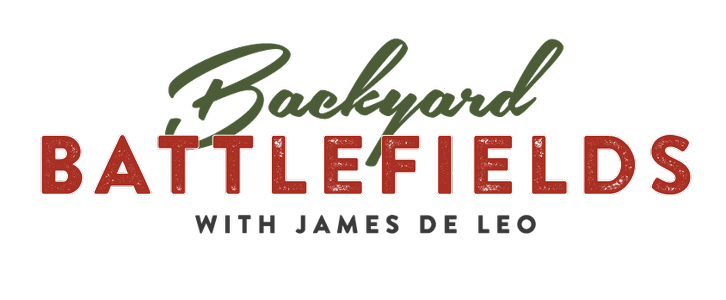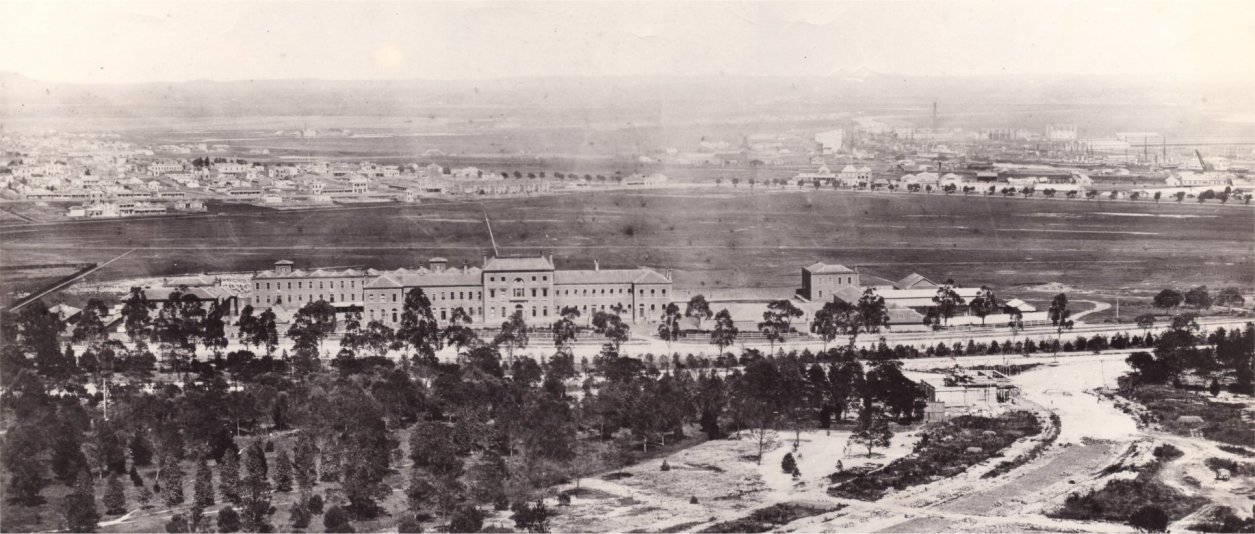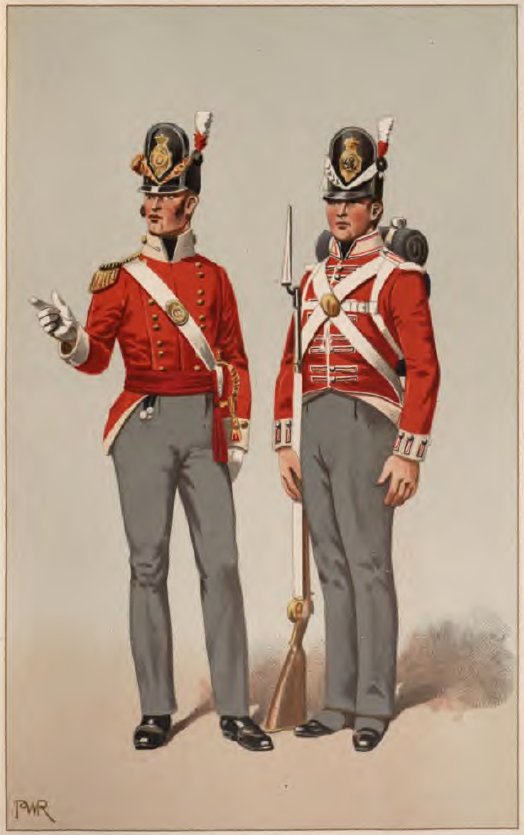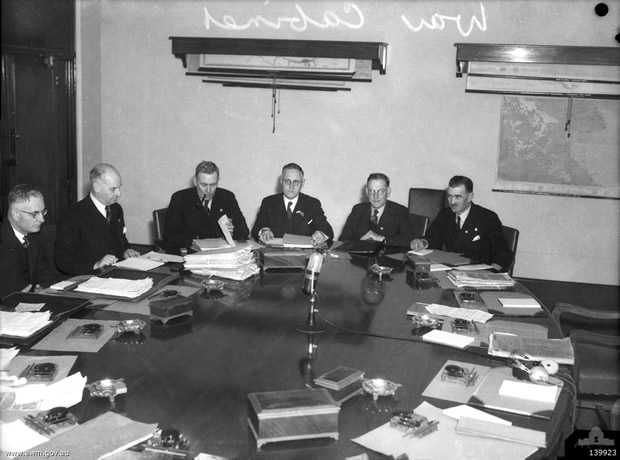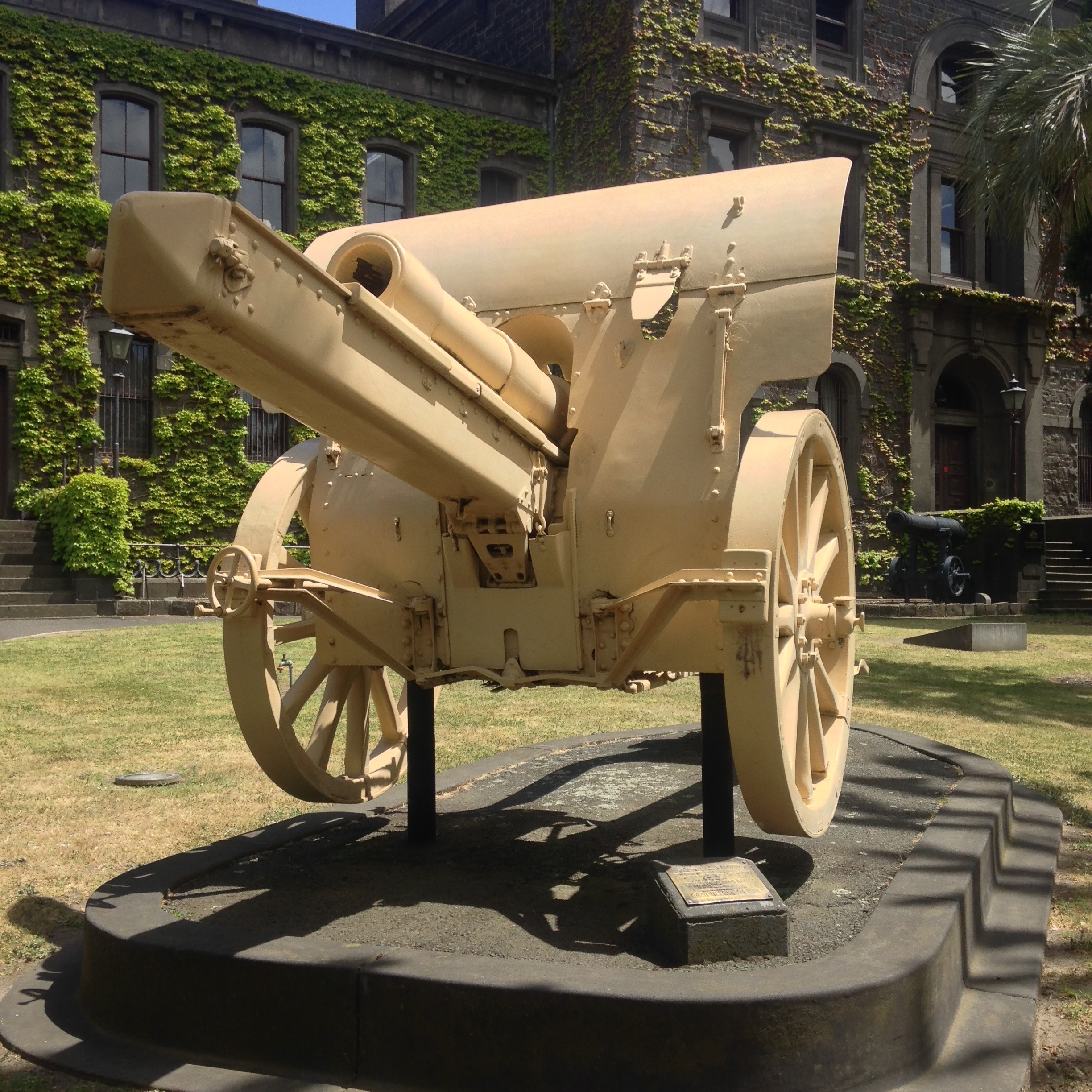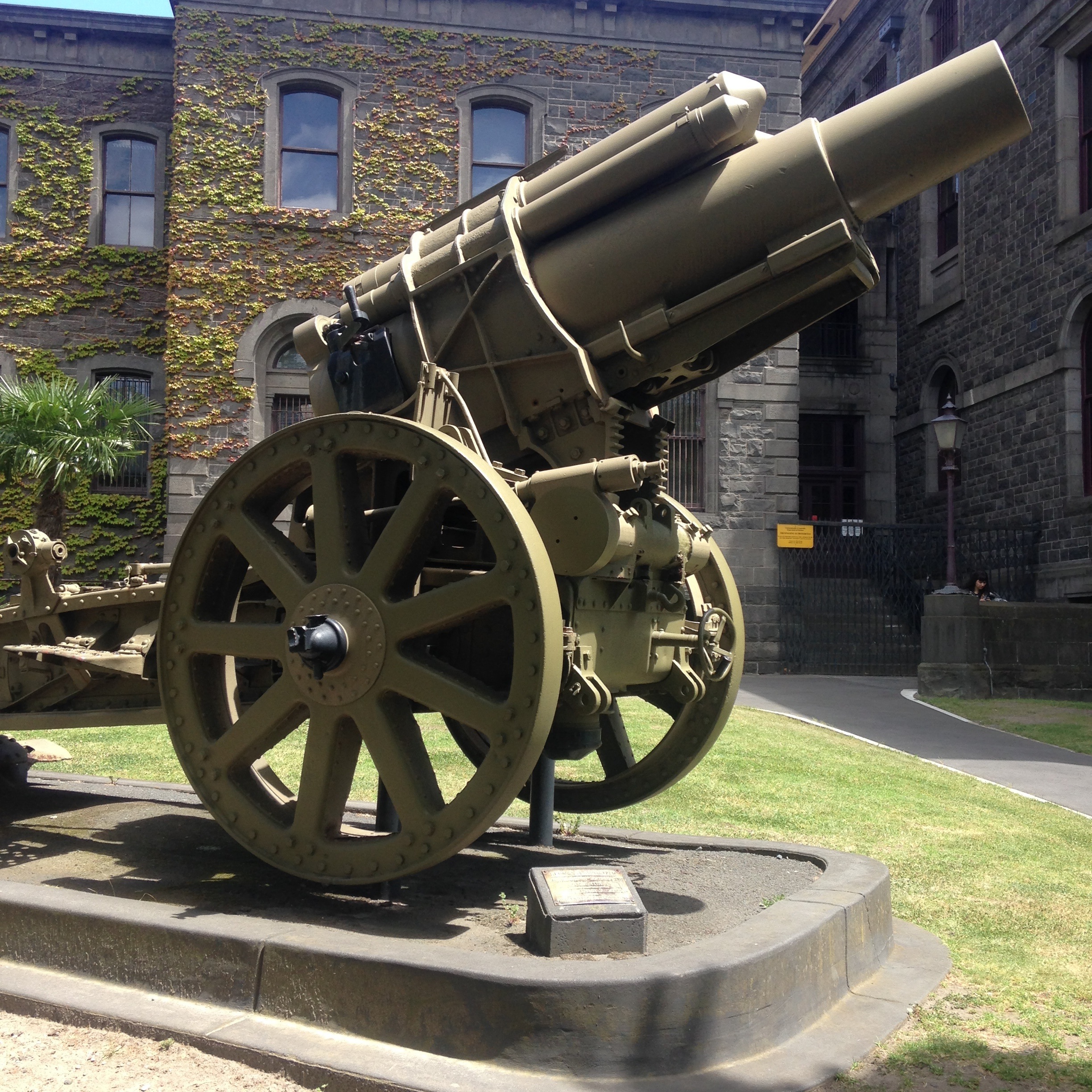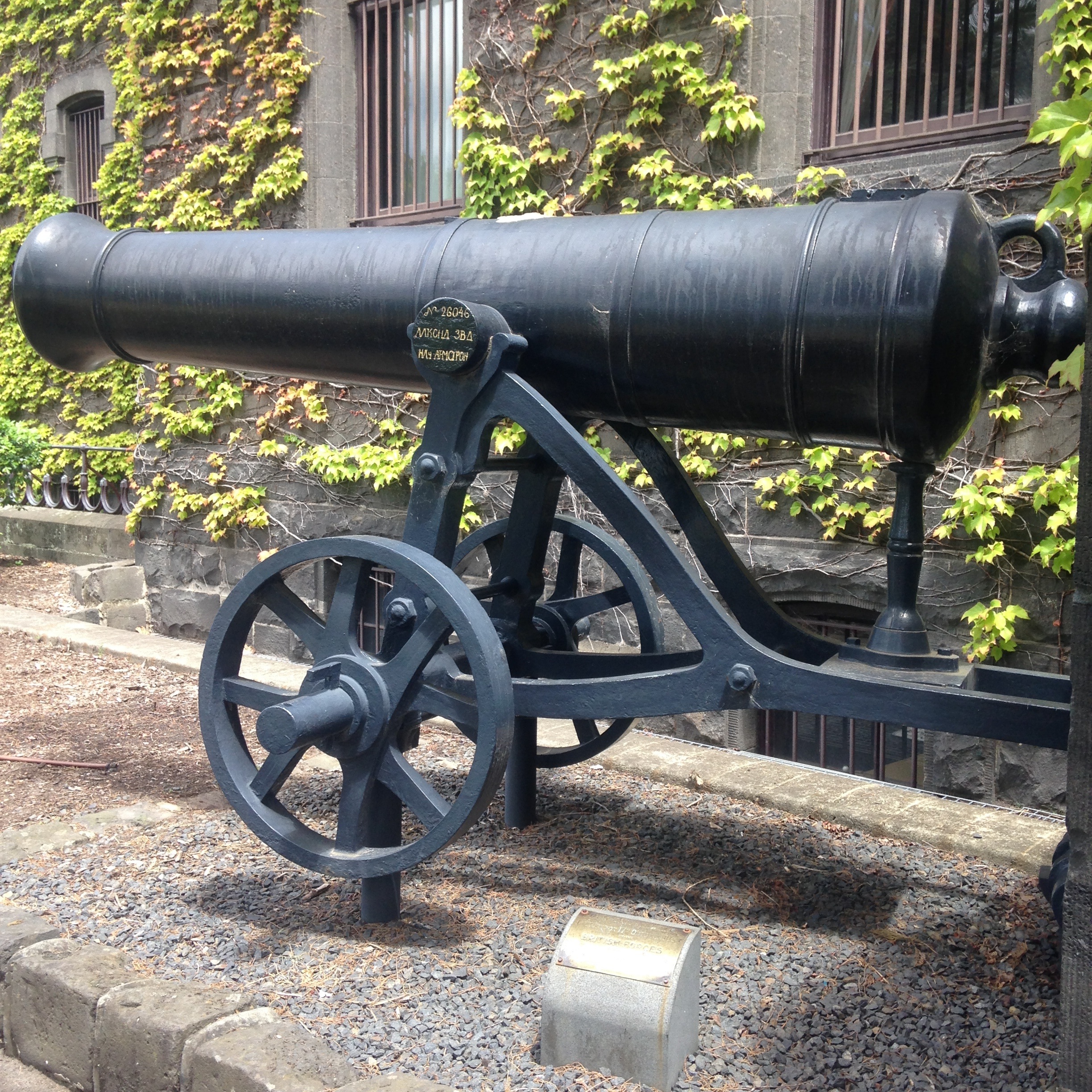If you’ve ever been down St Kilda Road here in Melbourne you might’ve wondered what the beautiful dark grey building just near the National Gallery is. Although, the guns, and possibly the prominent signage and the words on the signage might indicate to you that it’s something to do with the military. It’s Victoria Barracks and it was originally the home of British Imperial Garrison troops and their families.
It was named in honour of Queen Victoria and construction began in 1856 and finished in 1872. 16 years, a pace of construction that would no doubt impress the building industry today. The most prominent and well known part of the barracks is called A-Block. For architecture aficionados A-Block is built in a Neo-Renaissance style out of Victorian bluestone. It housed the British 12th and 40th Regiments of Foot, the East Suffolks and 2nd Somersetshires respectively, elements of which previously took part in the fighting at the Eureka Stockade in Ballarat. In 1870 when these and other British regular troops left Australia it became the home of the Victorian Colonial Forces.
The Southern Wing of A-Block became the home of the British Commander in Chief of Australian colonies until 1866 when a separate residence ‘The Grange’ was constructed a just a short distance down the road.
After federation in 1901 it continued its military purpose. It housed the department of Defence through the great war and into the second world war when it was the location of the Australian Government War Cabinet Room. This is where all major decisions regarding Australia’s wartime operations between 1939 and 1945 were made. In addition, it was also the headquarters of the Commander in Chief of the Australian Military forces General Sir Thomas Blamey.
Postwar, life got quiet for Victoria Barracks as it reverted to its role as the administrative HQ for army units in Australia up until1958 when the Department of Defence moved to Russell Offices in Canberra.
As interesting as the history of the building itself is, It’s what’s here at the front of Victoria Barracks that most grabs my imagination. Adorning the front lawn are four cannon captured from Britains various enemies on display. These are physical links to amazing moments in history and if I can paraphrase Australian singer songwriter Kate Cebrano, old guns are my weakness. When you are facing the building from St Kilda Road, on the left there is a Turkish 5.9inch howitzer.
It is gun number 956 made by the German firm Freidrich Krupp AG in 1916, as is evidenced by the markings on the breach block. You can find out more about Krupp guns by downloading the Boer War Memorial episode, but in the broad strokes, Krupp was an armaments firm who were the first to make steel cannons for the Prussian army.
It has a plaque which reads “Turkish 5.9 Inch Howitzer captured on 8th November 1917 by the Australian Mounted Division near Huj during the offensive against the Gaza-Beersheba Line which culminated in the occupation of Jerusalem”.
This is the campaign dramatized in the classic Australian film ‘The Lighthorsemen’ : (LIGHTHORSEMEN EXCERPT)
Another great account of war in this theatre is “With the Ninth Light Horse in the Great War,” written by Major T.H. Darley. Here is an extract:
The Turks had taken up a very strong position, supported by many guns, and the Yeomanry Brigade were seen to form a line, and with drawn swords, make a most gallant charge over the broken ground, in the face of heavy rifle and shell fire. “A” and “B” Squadrons (9th LH) continued to push on, and the right flank patrol, under L.-Cpl. Bennett, gained Nebi Huj where, after shooting down the escort, they captured two 5.9 howitzers
One of these guns from Major Darley’s account may well be number 956, but it’s not certain as other Turkish guns were captured by different units that day.
Here on the right there is another Krupp cannon, a Model 1910 21 cm Mortar. It is classified as a mortar but it’s actually a heavy howitzer which could fire a short, fat 114KG projectile about 9km. It was a short range, in-direct fire weapon that was used to lob shells over obstacles and the walls of fortifications.
This example was captured after an attack launched on September 18 , 1918 by the Australian 1st and 4th divisions on the Hindenburg Line. September 18 is also my birthday which is perhaps why I feel such an affinity for the gun, us both being Virgos. The Hindenburg Line was a major German defensive position made up of four parallel parts: the outpost line which is what the 1st and 4th divisions attacked, the main Hindenburg Line and the Le Catelet and Beaurevoir lines. It too has a plaque which reads:
“German 8INCH HOWITZER. Captured on 18th 19th September 1918 near San Quentin during the attack by the 1st and 4th Australian divisions A.I.F on the Hindenburg Outpost Line.”
There are two more guns on display. They flank the front doors of the building and are twin Russian 36 pound naval cannons. The Cyrillic lettering on their sides indicate they were cast in 1838 at the Alexander Factory in Petrozavodsk in North West Russia. They were captured by British forces during the Crimean War, a conflict fought during 1853 and 1856 between England, France, the Ottoman Empire and Mediterranean superpower…Sardegna, against Russia.
In early 1855, after a protracted siege of the Crimean city of Sevastapol, the British and French forces overcame the Russian defenders and captured over 4,000 artillery pieces. In celebration of the victory it was decided to distribute a pair of cannon to each of the most important cities in the British Empire – including Gibraltar, Quebec, Dublin, Auckland and Melbourne.
The cannon weren’t just sent for display. Parts of some captured Russian cannon were removed and the metal used to create the Victoria Cross, the highest Commonwealth military award for valour. The metal that remains from the original cannon is kept in a British Army vault and it’s estimated that there’s enough left for about 80 medals which were and are still made by Hancock’s Jewelers in London.
In 1858 8 Russian cannons were dispatched to Australia. Two are located in Centennial Park in Sydney and another two in Adelaide. One each are in Hobart and Launceston respectively and the final two are sitting right here on St Kilda Road watching the scarves go by.
If you’d like to know more, some great references are the website of the Australian Light Horse Association, Google them or visit our website for the link also check out the classic Australian film: The Lighthorsemen, it features a pre-Baywatch Peter Phelps…very striking. Conversely If you want your appetite whet for the Crimean War, read ‘Flashman at the Charge’, for some risqué historical fiction by the brilliant writer George Macdonald Fraser.
I hope you enjoyed this episode, so if you’re visiting Melbourne or live here and you’re walking past Victoria Barracks, Take some time to appreciate the beautiful architecture and the amazing artifacts that are sitting just a few meters off St Kilda road.
The Australian Lighthorse Association – http://www.lighthorse.org.au/
